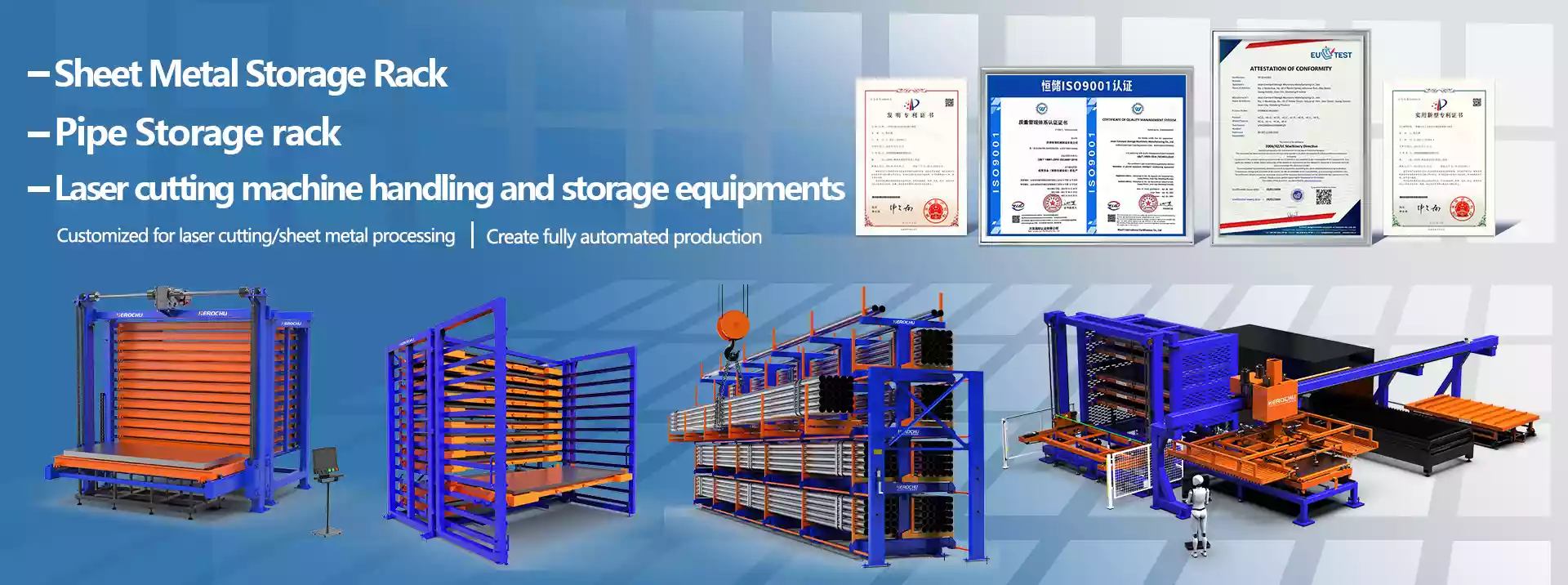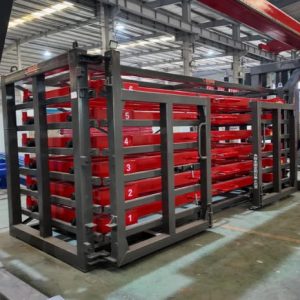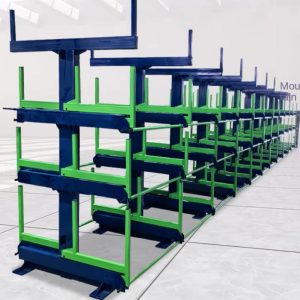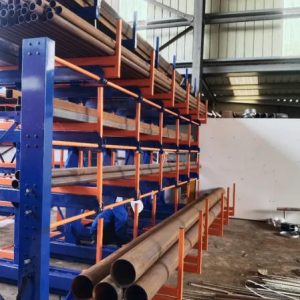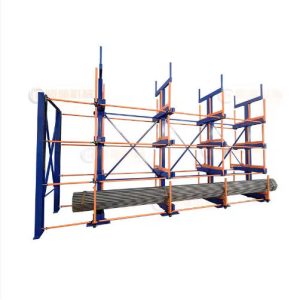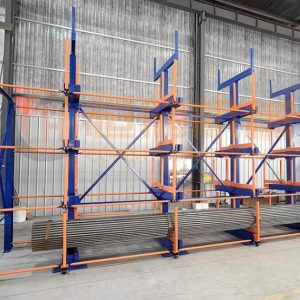Herochu – the name engineers whisper when they need a Customized sheet metal racks china manufacturer who can ship a CE-marked, ISO-governed, wallet-friendly solution in under four weeks. We do not sell generic shelves that happen to hold steel; we build steel that thinks like a storage engineer. From the first plasma-cut slot to the final powder-coated beam, every upright, drawer rail and safety catch is governed by drawings that carry your logo, your column centres, your forklift aisle, your maximum crane hook height. The result is a rack that arrives looking like it grew up inside your building, not like it was squeezed off a catalog page.
Start with the numbers that pay the freight. A two-bay starter block—4,8 m wide, 1,6 m deep, 2,2 m high—lists at three thousand nine hundred and ninety-nine dollars FOB Qingdao. That price buys you six drawers, each rated for three tonnes, each extending one hundred percent so a magnet or vacuum lifter can land cleanly on every square millimetre of surface. Add a bay, subtract a level, swap in 5 t slides or request a 6 025 mm cradle for ship-building plate and the cost scales by steel weight and machining time, not by mystic “option” multipliers. In short, you pay for metal and motion, not marketing.
We begin every conversation with a one-page questionnaire that feels almost too simple: largest sheet, smallest sheet, heaviest stack, how many shifts, how flat is your floor, how high is the ceiling. Send it back with a phone snap of the current mess and our application team returns a 3-D STEP file overnight showing every drawer cycle, aisle width and crane hook path. The drawing also tags the exact footprint in square metres and the cubic metres of air you are about to reclaim. Most customers see between seventy and eighty percent floor-area reduction the first time they hit “measure.” That reclaimed space often becomes the pad for the next laser, the next press brake or the next assembly cell—expansion without pouring concrete.
Customisation goes deeper than width and height. Surface-sensitive aluminium demands UHMW-lined saddles; galvanised for outdoor HVAC requires drainage slots; stainless for food-grade work gets a full glass-bead blast and nitrite-free oil before crating. Need seismic calculations for a New Zealand plant? We add cross-braced moment frames and anchor bolts rated for 0.3 g. Want to roll the whole bank sideways? We integrate heavy-duty castors with foot-operated locks so you can hoover the floor beneath. One automotive OEM asked for RFID pockets welded under every drawer; now the forklift reader updates ERP the instant a coil nest is stored or removed. Nothing is off-menu unless physics says no.
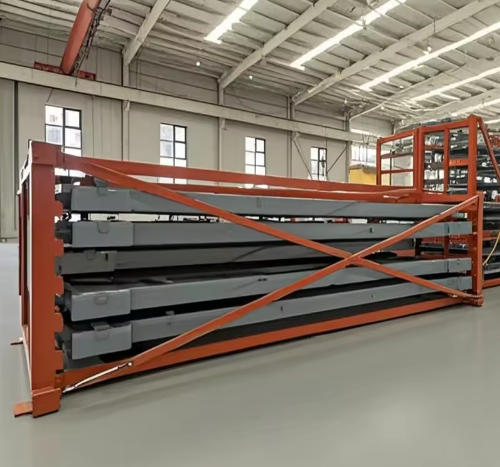
The heart of the system is a slide rail machined from 40 mm induction-hardened rod and fitted with sealed bearings that carry a dynamic load five times the static rating. That sounds like overkill until you watch a 2 t bundle slam home at the end of a crank stroke; the rail barely whispers. A captive chain drive keeps the drawer from coasting, and an auto-lock pin snaps into place when the drawer seats, preventing the nightmare of accidental roll-out during forklift traffic. The entire chassis is robot-welded in one fixture to keep tolerances inside half a millimetre—critical when you expect a lifter to hit the same pixel on a 6 m sheet every cycle for ten years.
Powder coat is not chosen for glamour. We specified RAL 5017 traffic blue because it reflects overhead light and makes edge profiles visible to crane cameras running monochrome vision. The primer is zinc-rich at sixty microns, top coat is UV-stable polyester at eighty microns, and both layers are baked at 200 °C so the finish survives the same tropical humidity that corrodes the containers on the dock. Salt-spray tests routinely pass 1 000 hours; if your plant is seaside we will add a epoxy-intermediate layer at no charge because we would rather the rack outlive the building than the other way around.
Certification is not a sticker purchased from a broker. Our weld procedures are qualified under ISO 15614-1, inspected by UT Level-II technicians and filed for fifteen years. The final assembly is proof-loaded to 1.25 times rated capacity, measured with calibrated load cells traceable to NIST, and the deflection is recorded on a signed test certificate that travels with the packing list. CE declaration covers EN 13155 (non-fixed lifting attachments) and EN 15635 (steel static storage), while the UE declaration of performance lists yield strength, weld factor and coating thickness in the public domain. When an auditor asks for traceability, you hand over one PDF that ends the conversation.
Shipping is engineered with the same miserly attention to cost. Uprights and drawers travel in knock-down crates built from the same steel they protect, strapped to 100 × 100 mm timber runners so a standard forklift can unload from either side of a 40 ft container. One HC container swallows twenty-two average bays; freight cost per bay from Shanghai to Los Angeles is currently lower than the domestic truck rate from LA to Phoenix. Bolts, washers and assembly drawings are vacuum-packed to the inside of the crate lid—no plastic bubble maze to slice open on a busy dock. Average re-assembly time is forty-five seconds per bolt, and every bolt is the same M16 grade 8.8 so the installer’s 24 mm socket never leaves the impact gun.
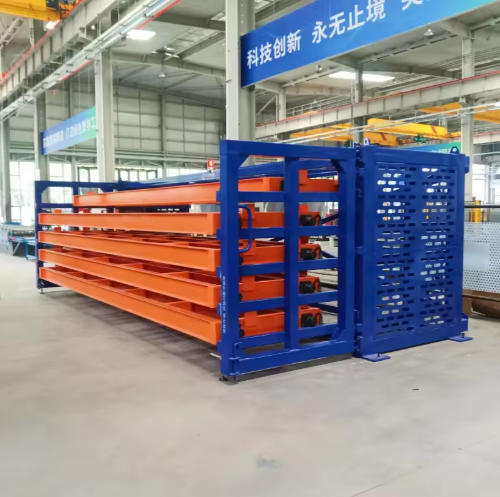
The moment the last drawer is cycled and signed off, the rack enters a lifetime support loop. A QR code punched into an upright links to a live parts book that knows the serial number of your rail, the date it was hardened and how many cycles it has logged. If a roller ever spalls, you scan, click and a replacement leaves the same day from stock in Rotterdam, Houston or Singapore. We also keep a cloud log of cycle counts; when a drawer approaches its one-hundred-thousandth motion we email a reminder to order a refresh kit—preventive maintenance instead of midnight panic.
Customers sometimes ask why a Chinese manufacturer quotes in dollars, ships in metric and certifies to European norms. The answer is simple: your laser does not care where the rack was born; it cares that the sheet arrives clean, flat and on time. Our factory floor sits two hours south of Shanghai, but our design desk is online with engineers in Chicago, Bremen and Pune. Drawings swap before breakfast, cutters burn before lunch, containers sail before the weekend and your floor space appears before the next quarterly review. Distance is measured in milliseconds, not miles.
So if you are still convinced that sheet storage is a necessary evil rather than a competitive weapon, send us the dimensions of the pile currently blocking your fifth-axis fork truck. We will send back a drawing that shows the same metal standing vertically, indexed by grade, visible at a glance, retrievable in a minute and protected from the expensive scratches that turn into scrap invoices. The price starts at three thousand nine hundred and ninety-nine dollars, the footprint shrinks by eighty percent and the first time your laser cuts instead of waiting you will understand why Herochu is the Customized sheet metal racks china manufacturer that turns idle steel into active profit.
